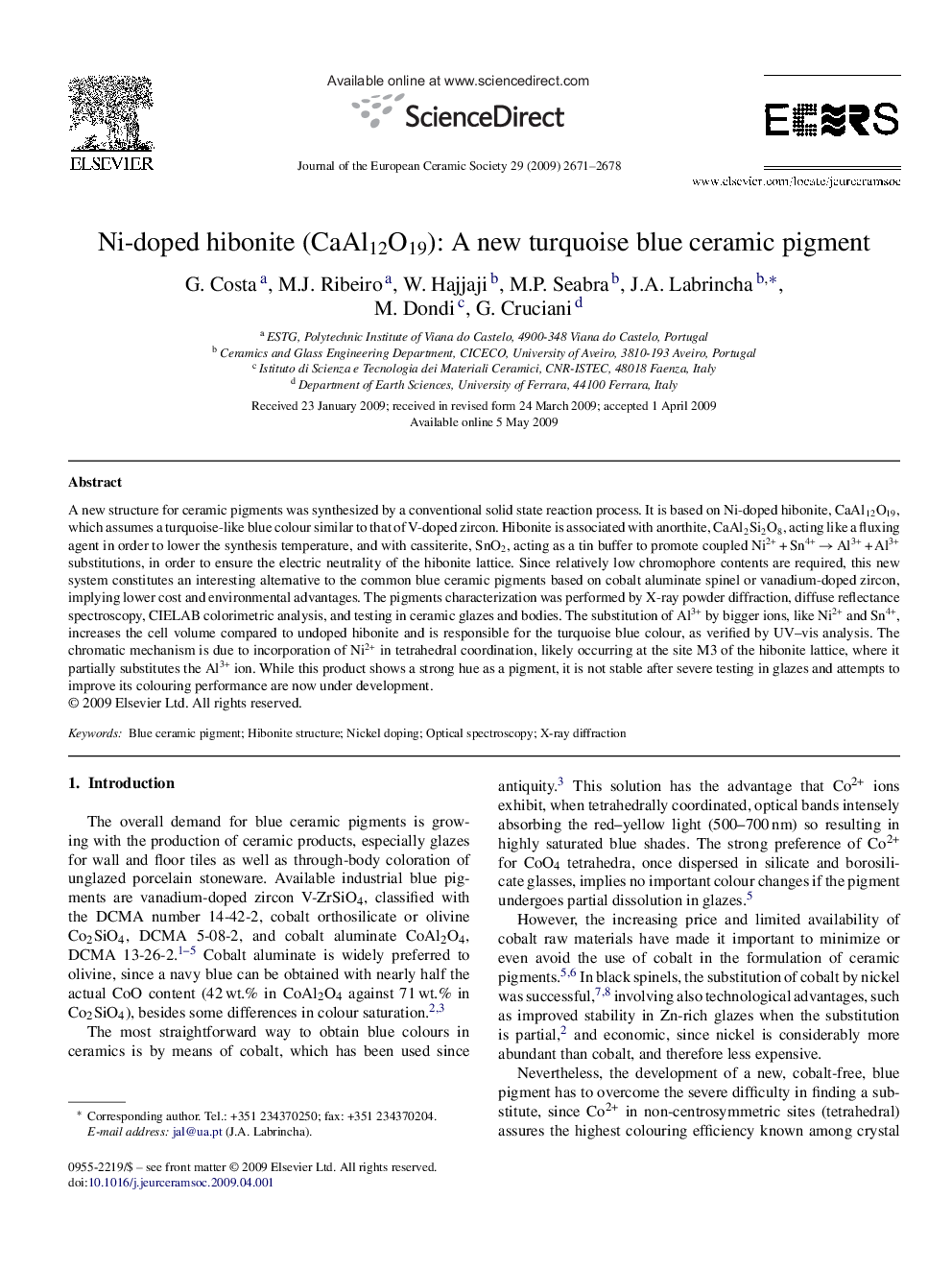| Article ID | Journal | Published Year | Pages | File Type |
|---|---|---|---|---|
| 1477162 | Journal of the European Ceramic Society | 2009 | 8 Pages |
A new structure for ceramic pigments was synthesized by a conventional solid state reaction process. It is based on Ni-doped hibonite, CaAl12O19, which assumes a turquoise-like blue colour similar to that of V-doped zircon. Hibonite is associated with anorthite, CaAl2Si2O8, acting like a fluxing agent in order to lower the synthesis temperature, and with cassiterite, SnO2, acting as a tin buffer to promote coupled Ni2+ + Sn4+ → Al3+ + Al3+ substitutions, in order to ensure the electric neutrality of the hibonite lattice. Since relatively low chromophore contents are required, this new system constitutes an interesting alternative to the common blue ceramic pigments based on cobalt aluminate spinel or vanadium-doped zircon, implying lower cost and environmental advantages. The pigments characterization was performed by X-ray powder diffraction, diffuse reflectance spectroscopy, CIELAB colorimetric analysis, and testing in ceramic glazes and bodies. The substitution of Al3+ by bigger ions, like Ni2+ and Sn4+, increases the cell volume compared to undoped hibonite and is responsible for the turquoise blue colour, as verified by UV–vis analysis. The chromatic mechanism is due to incorporation of Ni2+ in tetrahedral coordination, likely occurring at the site M3 of the hibonite lattice, where it partially substitutes the Al3+ ion. While this product shows a strong hue as a pigment, it is not stable after severe testing in glazes and attempts to improve its colouring performance are now under development.
